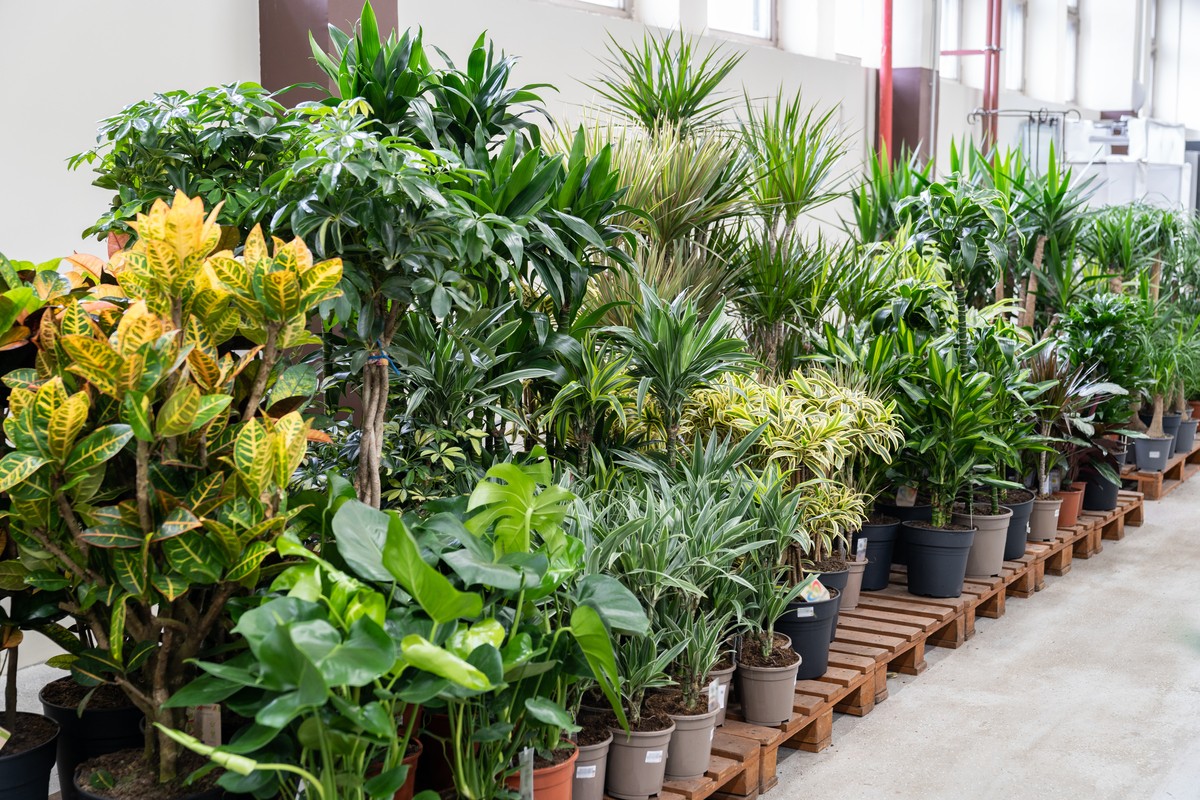“Bring Nature Indoors: Enhance Your Home with the Beauty and Benefits of Indoor Plants”
Indoor plants play a crucial role in improving the aesthetics and atmosphere of a home, offering both visual beauty and health benefits. Integrating greenery into your living spaces makes your home feel more vibrant and welcoming and improves air quality. Whether you’re looking for small indoor plants, air-purifying options, or indoor flowering plants, there’s an array of choices to suit every home and lifestyle.
Let’s explore how to bring nature into your home with indoor plants and some critical tips for decorating your living spaces with greenery.
1. Indoor Plants in India
Several indoor plants thrive in the local climate in India. Popular options include the Money Plant, Areca Palm, and Tulsi Plant, known for their resilience and air-purifying abilities. Indoor plants in India are functional and add a traditional touch to modern interiors.
2.Benefits of Indoor Plants
Indoor plants are more than just decorations in the home. They significantly benefit your home environment. Some of the best indoor plants for the home also act as air purifiers, helping to remove toxins and increase oxygen levels. Indoor plants for oxygen, such as Snake Plant and Areca Palm, are highly recommended for improving air quality, making them excellent options for bedrooms and living rooms.
3. Choosing Low Maintenance Indoor Plants
If you’re new to caring for indoor plants or have a busy lifestyle, consider low-maintenance plants that require minimal attention. Some of the best easy-to-care-for indoor plants include the ZZ Plant, Spider Plant, and Peace Lily. These plants thrive with little water and indirect sunlight, making them perfect for those who want hassle-free greenery.

4. Indoor Flowering Plants
For those who love a pop of color, indoor plants with flowers are an excellent way to introduce beauty into your home. Plants like Anthurium, Peace Lily, and African Violet are known for their vibrant blooms, which can brighten up any space. These indoor flower plants also add a delicate fragrance and natural elegance to your interiors.
5. Indoor Plants for the Living Room
The living room is often the focal point of a home, and incorporating living room indoor plants can make it feel more inviting. Fiddle Leaf Fig, Monstera Deliciosa, and Rubber Plant are popular choices for this space. These plants bring height and structure to the room, creating a bold, natural statement. You can also experiment with small indoor plants like Succulents or Aloe Vera for shelves, coffee tables, or window sills.
6. Indoor Plants for Bedroom and Office Spaces
The bedroom is another excellent area for plants that purify the air and promote relaxation. The Snake Plant and Lavender are among the best indoor plants for the bedroom due to their air-purifying properties and calming scents. Similarly, for a work environment, indoor plants for the office, like Spider Plant, Pothos, or Boston Fern, can help reduce stress and boost productivity.
7. Air Purifying Indoor Plants
Certain plants are primarily known for purifying the air, making them ideal for health-conscious homes. The best indoor plants for oxygen include aloe vera, Peace Lily, and Rubber Plant, all of which help eliminate harmful chemicals and increase oxygen levels indoors. These air-purifying indoor plants not only enhance air quality but also add greenery and elegance to your interiors.
8. Top 10 Indoor Plants for Home
When selecting the best indoor plants for your home, consider these top 10 indoor plants that are both aesthetically beautiful and easy to care for:
Overview of the Top 10 Indoor Plants
Here’s an overview of the top 10 indoor plants mentioned, focusing on their key benefits, care needs, and why they’re great for home interiors:
1.Snake Plant (Sansevieria)

Benefits: One of the best indoor plants for oxygen, the snake plant is known for filtering toxins like formaldehyde and benzene from the air. It also releases oxygen at night, making it ideal for bedrooms.
Care: Extremely low-maintenance, it thrives in low and bright light conditions and requires minimal watering. It is great for beginners.
2.Peace Lily (Spathiphyllum)

Benefits: Air-purifying indoor plants like Peace Lily are excellent at removing indoor pollutants. It’s also one of the few indoor plants with flowers, featuring white blooms that add elegance to any room.
Care: Prefers indirect light and needs watering when the soil feels dry.It’s a great option for both offices and homes.
3.Spider Plant (Chlorophytum comosum)
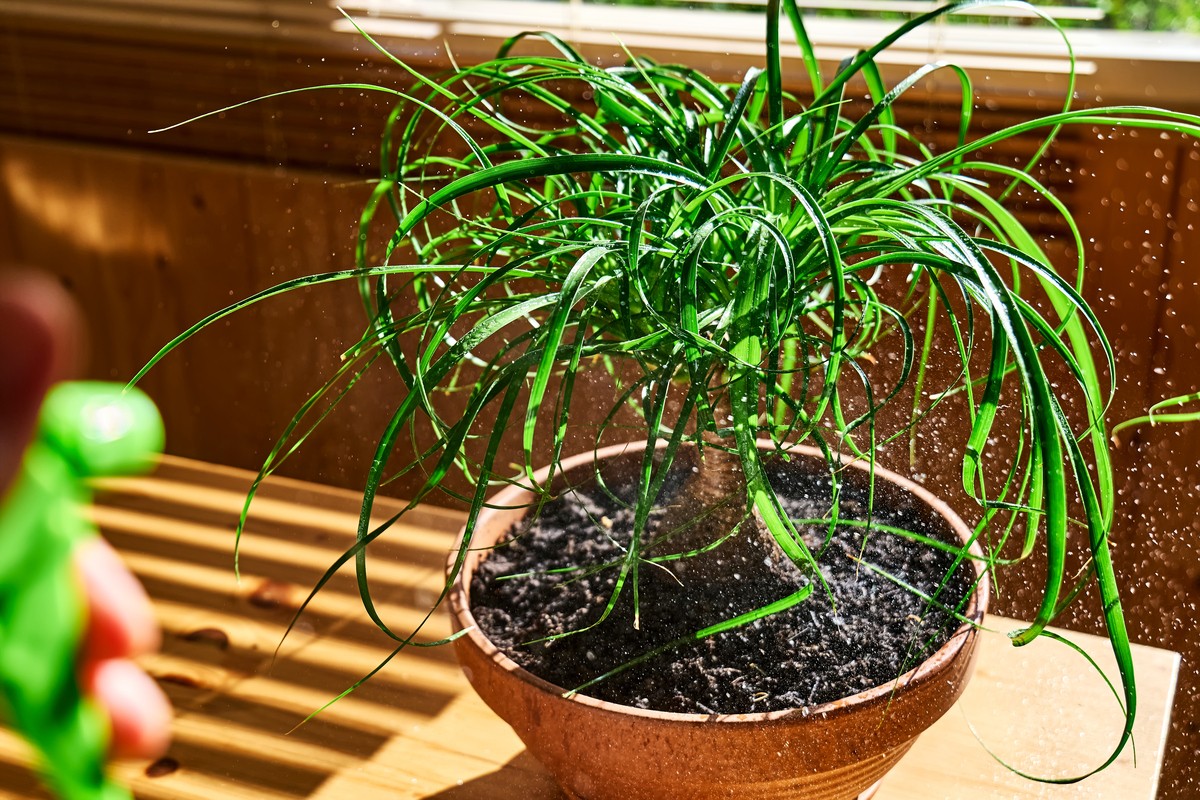
Benefits: A hardy, easy-care spider plant known for its air-purifying qualities. It removes harmful substances like carbon monoxide and formaldehyde from the air.
Care: Requires indirect sunlight and regular watering. It’s also pet-friendly, making it great for homes with animals.
4.Aloe Vera
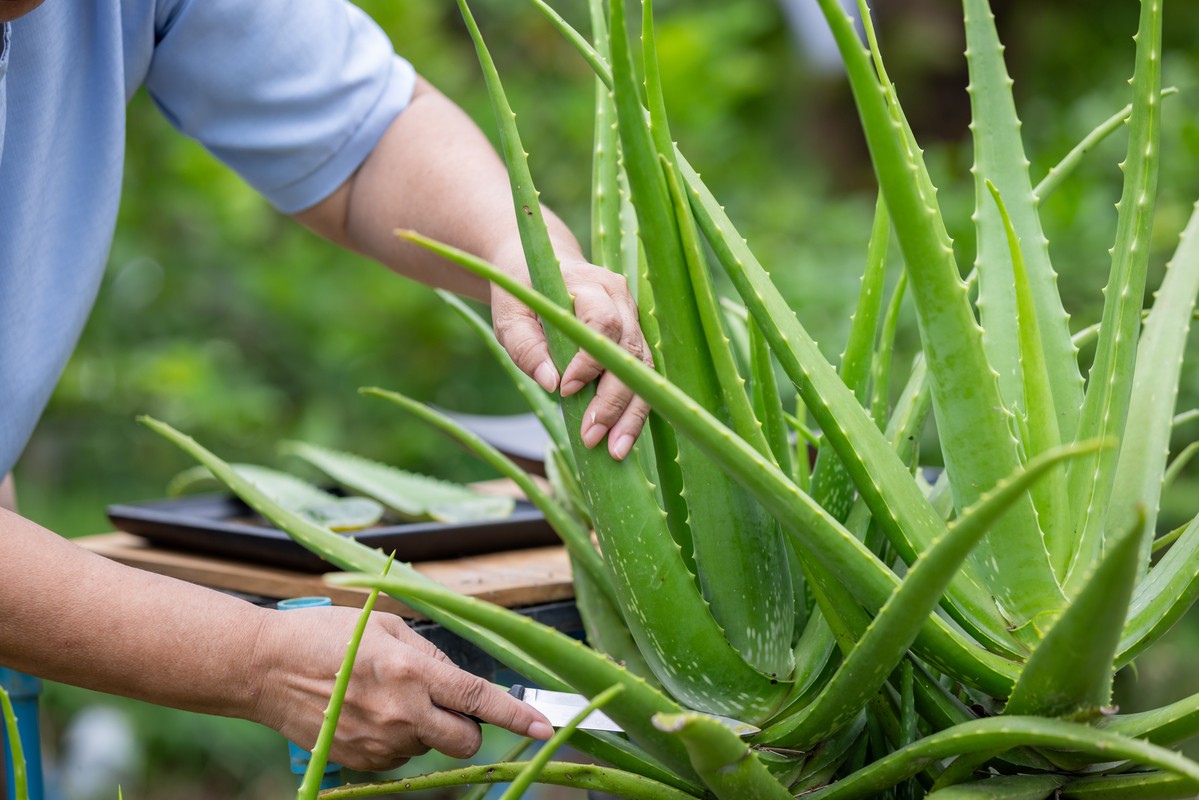
Benefits: It is a powerful air-purifying indoor plant, and Aloe Vera also has medicinal uses. Its gel-based texture can be used to treat burns and skin irritations.
Care: It prefers bright light but can tolerate low light. It needs occasional watering, especially when the soil becomes dry. It’s one of the best indoor plants for low-maintenance care.
5.ZZ Plant (Zamioculcas zamiifolia)

Benefits: It is ideal for low-light areas and is known for its glossy, attractive leaves. Due to its ability to survive under fluorescent lights, it’s a perfect indoor plant for office settings.
Care: It is very low-maintenance, requires minimal watering, and thrives in indirect light. It’s one of the most resilient small indoor plants.
6.Areca Palm (Dypsis lutescens)

Benefits: A popular home areca palm plant due to its ability to release large amounts of oxygen and remove pollutants. It’s also one of the most common indoor plants in India.
Care: Prefers bright, indirect sunlight and regular watering. Avoid overwatering. It’s one of the best indoor plants for oxygen.
7.Fiddle Leaf Fig (Ficus lyrata)
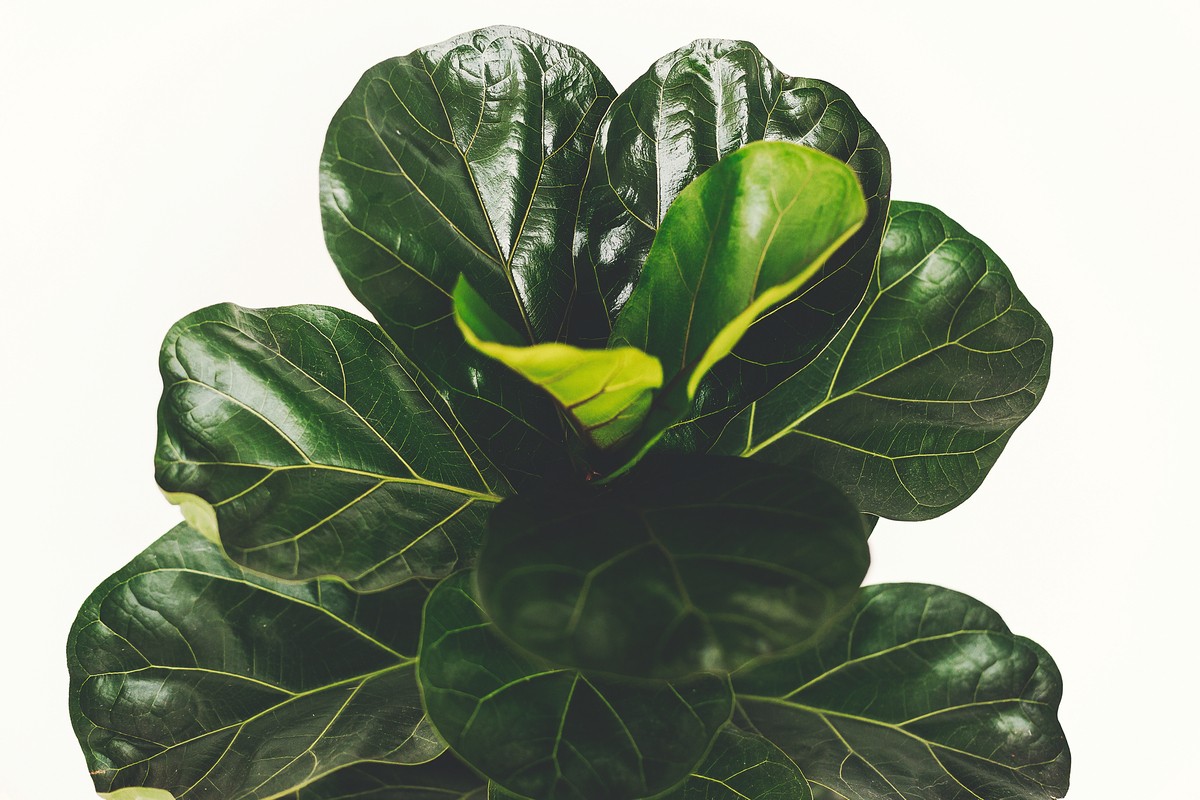
Benefits: A favorite for indoor plant decoration ideas in living rooms, the Fiddle Leaf Fig adds a bold statement to any room with its large, dark green leaves.
Care: It needs bright, filtered light and prefers moderate watering. It’s a bit more demanding than some other plants, but it’s worth the effort for its striking appearance.
8.Monstera Deliciosa

Benefits: Famous for its large, split leaves, Monstera is perfect for adding a tropical feel to your home. It’s a fast-growing plant and a favorite among decorators.
Care: Requires bright, indirect light and watering when the top inch of soil feels dry. Great for living rooms or offices with ample sunlight.
9.Rubber Plant (Ficus elastica)
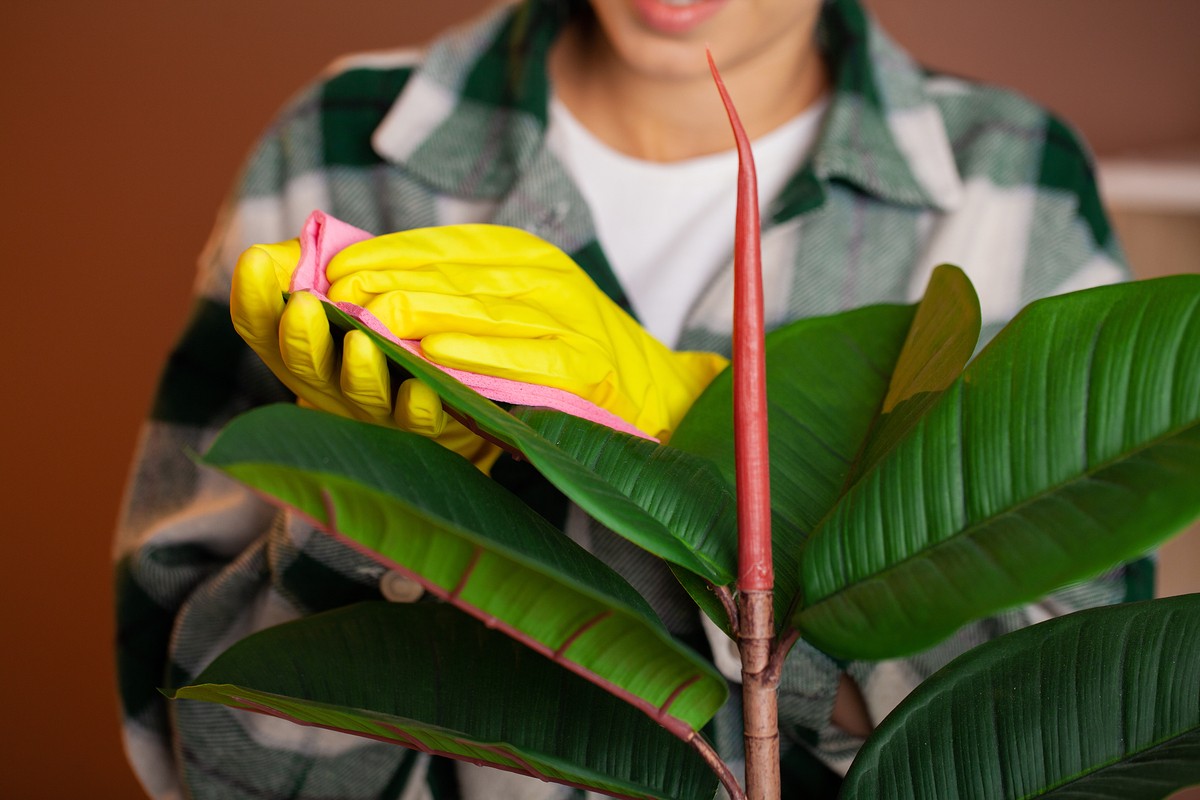
Benefits: The Rubber Plant is another air-purifying indoor plant that removes toxins like formaldehyde from the air. Its large, waxy leaves also add a modern touch to home decor.
Care: It prefers bright, indirect light but can also tolerate lower light. Water when the soil becomes dry. It’s one of the best indoor plants for the home if you’re looking for a stylish yet hardy option.
10.Pothos (Epipremnum aureum)
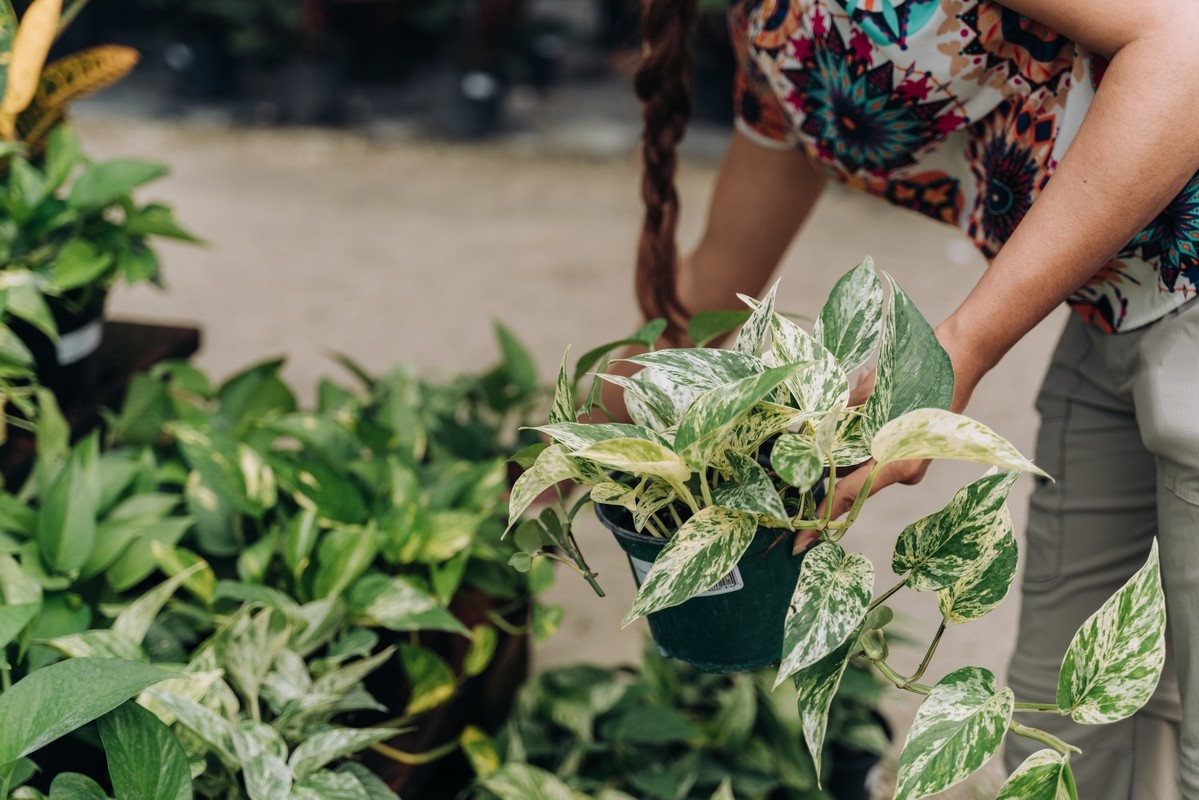
Benefits: Pothos is well-known for its trailing vines, making it a versatile plant to be grown in hanging baskets or placed on shelves. It purifies the air and proliferates, making it one of the top 10 indoor plants.
Care: Thrives in low-light conditions and is drought-tolerant, requiring little care. When the soil dries out, just add water.
How do you take care of indoor plants?
Caring for indoor plants is relatively easy if you understand their basic needs. Here’s a simple guide to help you maintain healthy indoor plants:
Proper Lighting
- Know your plant’s light requirements: Some plants thrive in bright, indirect light, while others prefer low-light conditions.
- Rotate plants regularly. This helps them get even exposure to sunlight and stops them from slanting toward the direction of the light.
- Supplement with artificial light: If natural sunlight is insufficient, use artificial grow lights to provide the necessary light for your plantss


Watering
- Check soil moisture. Overwatering is a common problem. Water most plants when it feels like the top inch of soil is dry.
- Use proper drainage: Ensure your pots have drainage holes to avoid waterlogging, which can lead to root rot.
- Water frequency: Tropical plants may need more frequent watering, while succulents and cacti require less.
Humidity
- Maintain per humidity: Indoor plants, especially tropical ones, thrive in humidity. Mist plants like ferns or use a humidity tray to increase moisture in the air.
- Group plants together: This creates a mini microclimate with higher humidity.
- Use a humidifier: Dry indoor environments require a humidifier to help maintain the proper humidity levels for your plants.


Fertilizing
- Feed during the growing season: Fertilize indoor plants during spring and summer when they are actively growing. Use a balanced liquid fertilizer every 3-6 weeks.
- Avoid over-fertilizing: Avoid using too much fertilizer, which can damage plants. Follow the recommended dosage or dilute the fertilizer for sensitive plants.
Pruning and Cleaning
- Prune dead leaves: Regularly remove yellowing or dead leaves to encourage new growth and prevent pests.
- Wipe dust off leaves: Use a damp cloth to clean leaves, ensuring they can photosynthesize properly.
- Trim leggy growth: If your plant becomes leggy, prune back overgrown stems to encourage bushier growth.

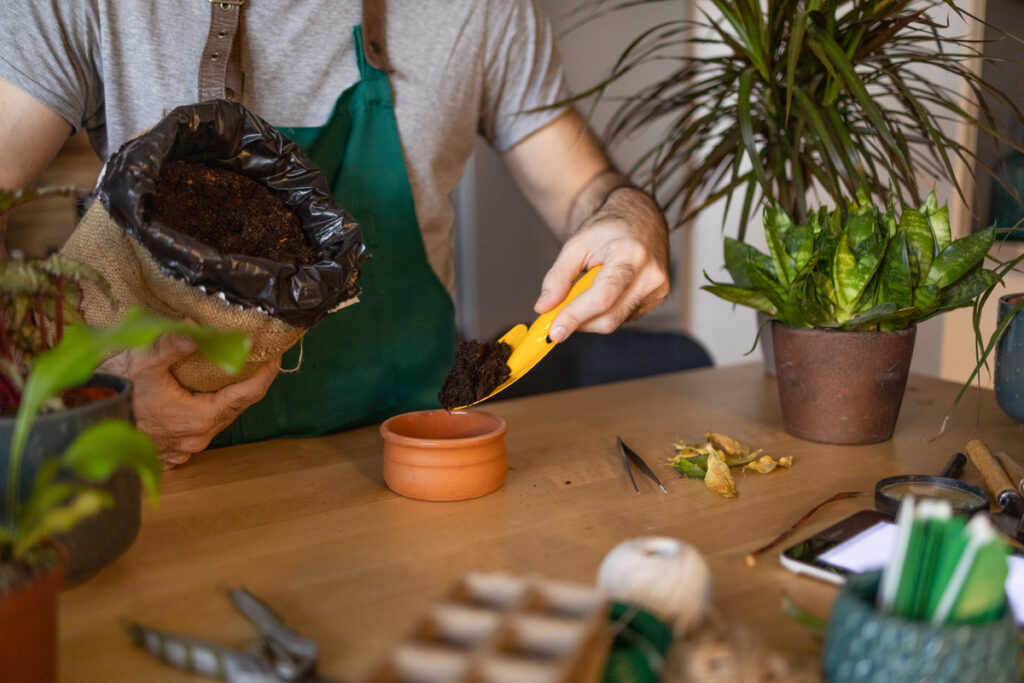
Repotting
- Repot when necessary: If roots are growing out of the pot or the plant seems root-bound, it’s time to repot—use a slightly larger pot and fresh potting soil.
- Use the suitable soil: Different plants have specific soil needs. Use cactus mix for succulents or general indoor soil for most other plants.
Pest Control
- Plants should be inspected regularly for pests such as spider mites, aphids, and mealybugs. Early detection can prevent infestations.
- Natural pest solutions: For organic pest control, use neem oil or insecticidal soap. Wipe down leaves and stems to remove insects.

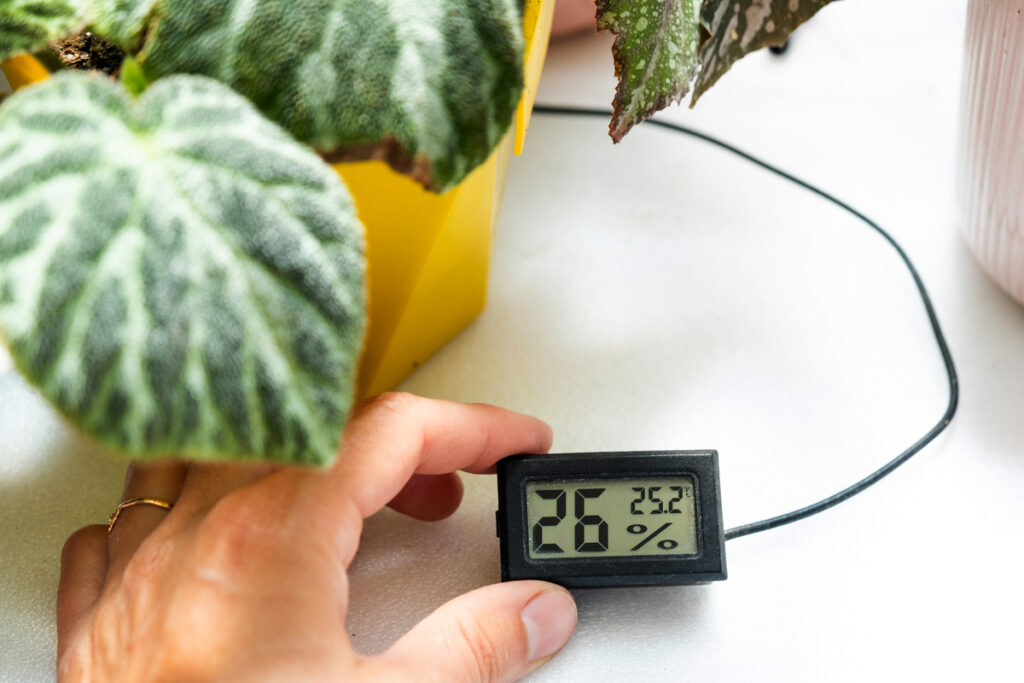
Temperature
- Maintain stable temperatures: Most indoor plants prefer 15°C to 24°C. Keep them away from air conditioners, heating vents, and drafts.
- Avoid extreme temperature changes: Sudden fluctuations can stress plants and affect their growth.
These care tips allow indoor plants to thrive and beautify your space. Each plant has unique requirements, so be sure to research their specific care needs.
Conclusion
Cibi+Simeon Designs – The best interior designers in chennai. We excels in blending creativity, functionality, and sustainability to create personalized, beautiful spaces for homes and businesses. Their attention to detail ensures that every design enhances a space’s aesthetics and functionality. Similarly, indoor plants enrich interiors, add natural beauty, improve air quality, and promote a healthier living environment.Whether through low-maintenance plants like the ZZ and Snake Plant or colorful options like Peace Lily and Anthurium, incorporating greenery into your design can elevate any room. With a range of indoor plants online options available, it’s easy to bring nature into your home and enjoy a vibrant, serene atmosphere.

